Evans Hall: Deep Dive in The Cal Offense
Breaking down play by play data
What’s a better use of 4 years of economics training (Berkeley), 2 years of MPP work (Georgetown), and 4 years of applied research and economics (IMF) than breaking down play-by-play data for a 1-5 Cal football team. I will need to put on Beethoven’s 9th Symphony, 4th movement, because: Joy.
Taking in 326 snaps of actual offensive football (no punts, end of the period, time outs etc., with those n=426), I will try to tease out the tendencies and profile what we do on offense and when we do it.
Note: I removed the Sac State game because I want to nail down tendencies and performance against comparable teams in terms of talent etc. This means some of the statistical means and values will look different from data you may find on ESPN or Sports-Reference.
Also some terms:
EPA/PPA: a measure of “value” 5 yards on to move from Cal 35 to Cal 40 isn’t as valuable as 5 yards to move from Opponent’s 5 to the end zone. This tries to put value on play outcomes.
Efficient Yards: small gains on 1st and 2nd downs to make converting downs easier.
Effective Yards: personal term, I use to describe offensive gains after the sticks. In this case it’s 1-10 extra yards.
First 15: See article here.
Play selection: by Quarter
Here is a breakdown of the offensive play-calling tendency depending on the position on the gridiron vis-a-vis the opponent’s end zone. This is distributed by quarter to see the timeline of the way Cal calls plays.
We can see here that the play-calling shifts towards being more pass-heavy post Q1. With Passing being prevalent across Q3 and Q4. Looking at the tail end near endzone situations we can also see that the pass is heavily favored. This is especially noteworthy in short down playcalling as well as
Another pressing issue is that we have crossed into the opponent’s end-zone exactly 4 times in Q2 and Q3 across all games. That’s bad.
Play selection: by Down
This tendency to throw on short distance is highlighted by the frequency of pass attempts on 2nd and short. We can see here that on tenendency we try to run on 2nd down only to pass on 3rd.
The run/pass split on 1st down indicates a more modern look at the college offense. Long gone is the primacy of the 1st down run. This split in part explained by the outcomes of each play-type by down:
Our best yards-based outcomes come from the passing game on Q1 and Q2 with the run taking primacy on late downs. Of course the pass heavy nature of the offense could be a product of the fact that Cal is 0-5 against all FBS opposition. Like in the WSU game Cal spent most of the game chasing points.
Play selection: by Trailing/Leading/Tie
Here the impact of being 0-5 is evident. However, even in leading situations, we’re passing the ball at the same clip as we’re running it. The run-pass ratio isn’t any better during ties where the ball is passed just as often as it is run:
We are replacing a lot of the rushing production while trailing with Chase scrambles and design QB runs.
Play selection and outcomes: by Green and Red Zone by Down
Green-zone is the area of the field before the opponent’s 20. This is the part of the field where most of the play-book is open since deep developing routes and play action are a bit more effective.
The diagonal line presents the threshold of whether or not the play has converted the down. There is a worrying amount of variance on 2nd down and < 5 : either we go and get deep or we fail and are forced to pass again on 3rd down., as well as a near-fanatical insistance on passing on 3rd and short despite having better outcomes on the ground.
The passing play-calling takes a dip in the red zone primarily because we’re losing out on the deep explosive pass we’ve been relying on. There aren’t many wins over the air in the 10-20 range of gains.
The run game in the red zone is showing more effective gains even on 2nd and > 5 we’re gaining ground at a decent clip. However, on 2nd and <5 the efficiency dips. Is this the product of an underused run game or is it that we’re only running into opportune situations. A bit of column A and a bit of column B. 2nd and short runs are much harder to execute due to the defense keying on it without the fear of a deep pass.
Play selection and outcomes: by Green and Red Zone by Play Type
PPA/EPA is a measure of “value” 5 yards on to move from Cal 35 to Cal 40 isn’t as valuable as 5 yards to move from Opponent’s 5 to the end zone. This tries to put a value on play outcomes. Here we can see Cal (bold lines) compared to the sample of 52850 offensive plays against FBS competition.
We can see here that in the Green Zone we are a slightly above average offense whose passing offense regresses and gain a lot of variances, and the run offense remains at least productive.
It’s that variance on the passing play in the red zone that looks like is killing the Cal drives. This is sacks and incompletions to turn 2nd and 7 into 3rd and 7.
Play selection and outcomes: by Down and Play Type
Let’s delve deeper into the comparisons to look at how good Cal has been about making the best of a down and distance and how we are gaining. Here we can see the outcomes of each play in a “yards gained over needed”. 0 here means that the play gained enough yards to covert. Anything above is gravy and anything less than 0 is another down needed.
Again the shaded area is the national distribution, and the thick lines are Cal. An encouraging sign here is that we tend to start 1st downs more effectively than the national average, but peter out on any intermediate gains post-sticks. The running game runs hotter on 1st and 3rd downs, taking a dip in trying to get the 1st down on 2nd down rushes.
Here again we can see that despite having a minor bump in outcomes on 3rd down passing, the 3rd down runs are much more effective in converting 3rd and shorts. The outcomes here do not explain or justify the aforementioned fanatical passing on 3rd and short.
Play selection and outcomes: by Quarter and Play Type
This chart depicts the idea that the Cal 1st 15 effects. With the offense producing well early on, not being effective, buy efficient with flashes of explosiveness. The regression hits hard in Q2 and Q3 when the offense cools to being average over the air, and bad qt Q2 on the ground to ok in Q3.
Q4 is when the offense gets some signs of life with the return to mid-tier efficient passing, however, the lack of 0-10 yards after the sticks is again troubling.
First 15: Yards Gained Over Needed
We can see here the huge advantage we gain in being efficient on offense in the 1st 15. The passing and rushing offense showing efficient and even effective (0-10 extra yards gained post-sticks) unto to regress (see Cal hump at the -10 value).
There is a lot of unpack schematically, later on, however, we can see here from an outcomes perspective. The lack of effective offense is causing the offense to rely on long flawless drives or big plays.
Finally, the last chart shows much the same, and the efficient passing offense turned into mediocre with the running game experiencing a lesser rate of regression.
Conclusions
What does this say about our offense? In the grand scheme of things: we’re a pretty-run-of-the-mill mediocre offense with flashes of deep passing off-setting the lack of plays beyond the sticks.
It’s an offense that is overly reliant on 3rd down and short passing and has a heavy reliance on it’s QB to make something happen in those moments. We’re a QB-centric offense and it shows. The offense struggles in the red zone due to the fact that the threat of the deep pass is limited by the end zone.
Finally, we’re an efficient offense in the first 2 drives after which there is a high variance offense that either stalls out by having to rely too much on single-digit yardage gains or explosive passes. Neither conducive to having a game-long effective offense.


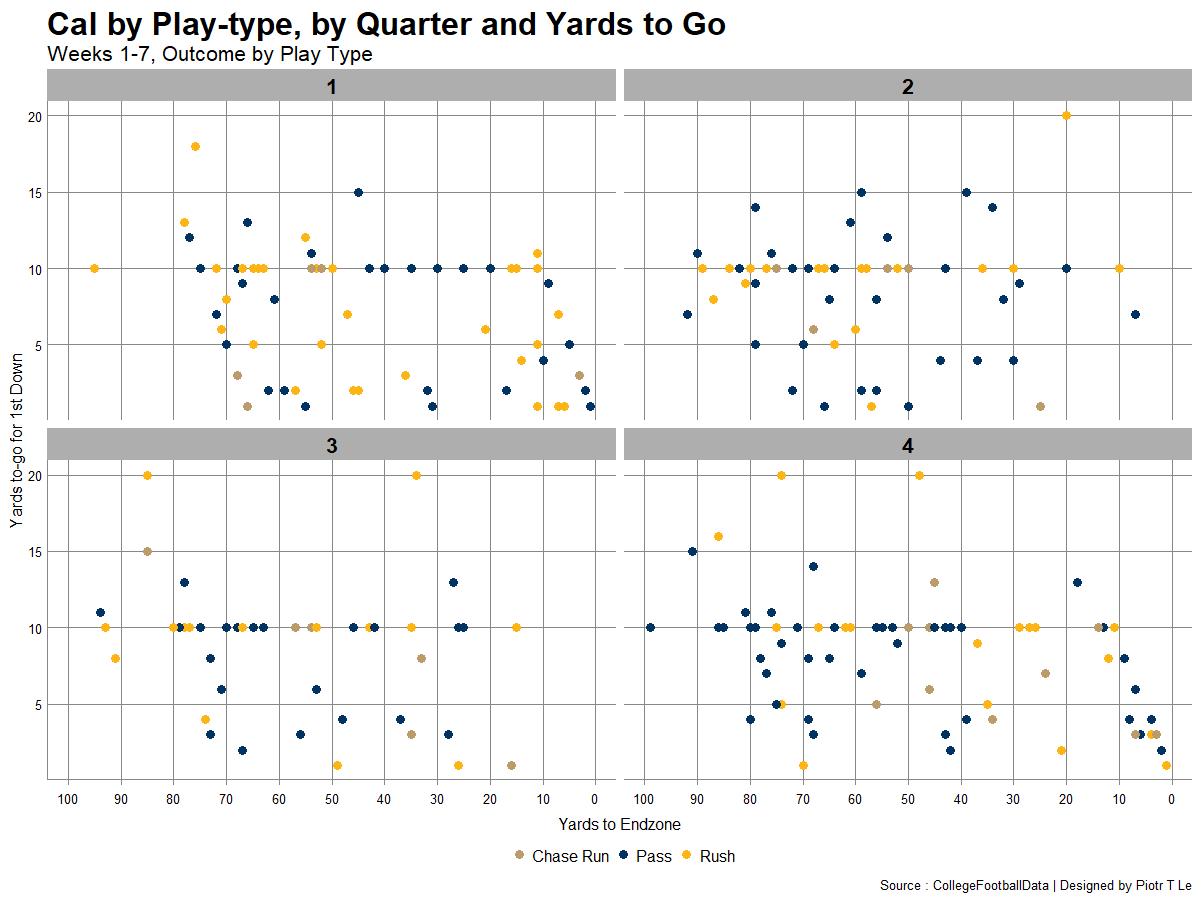
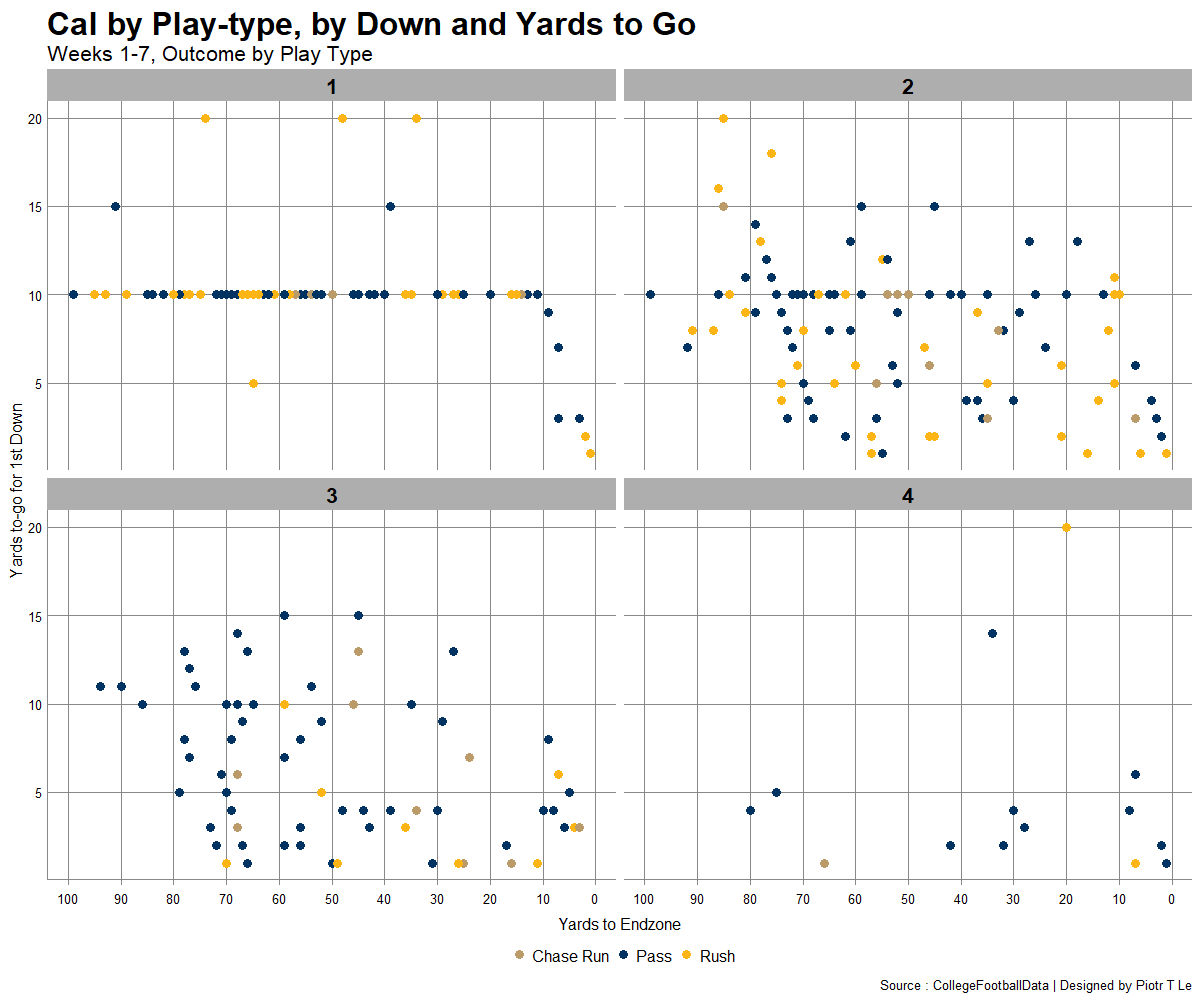
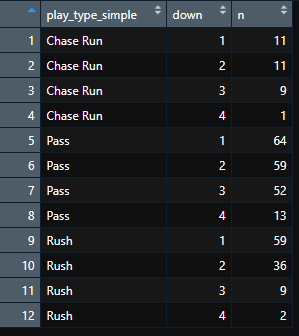
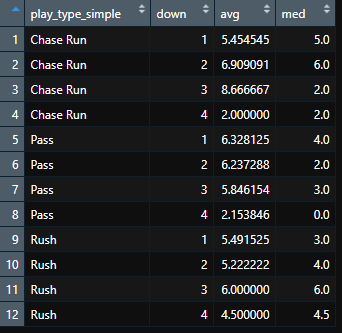
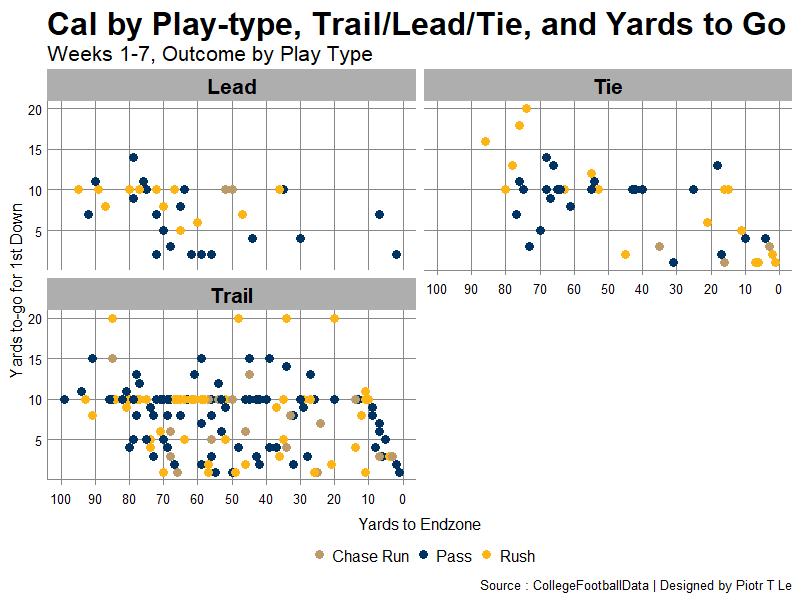
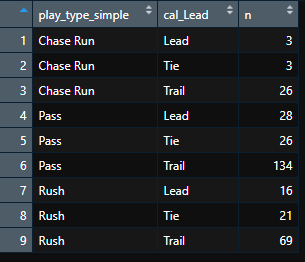
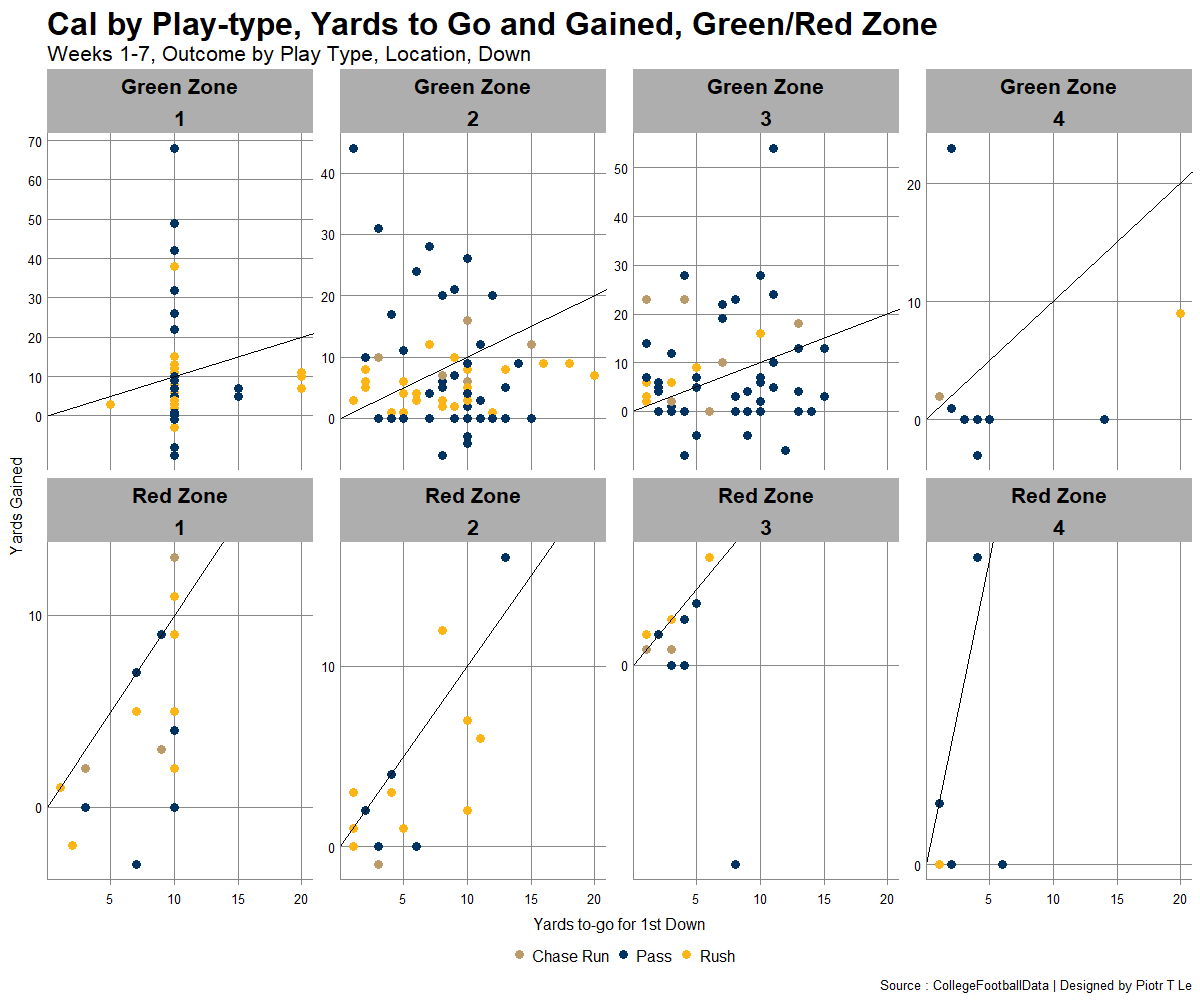
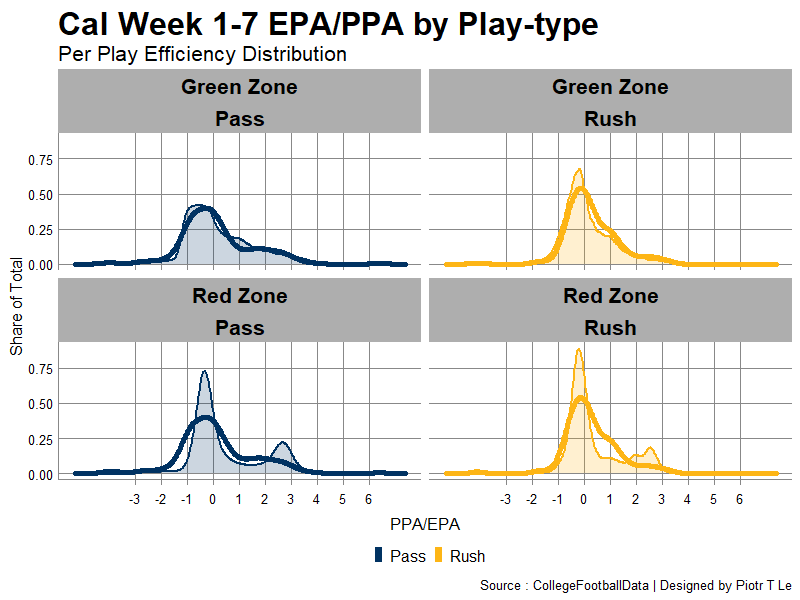
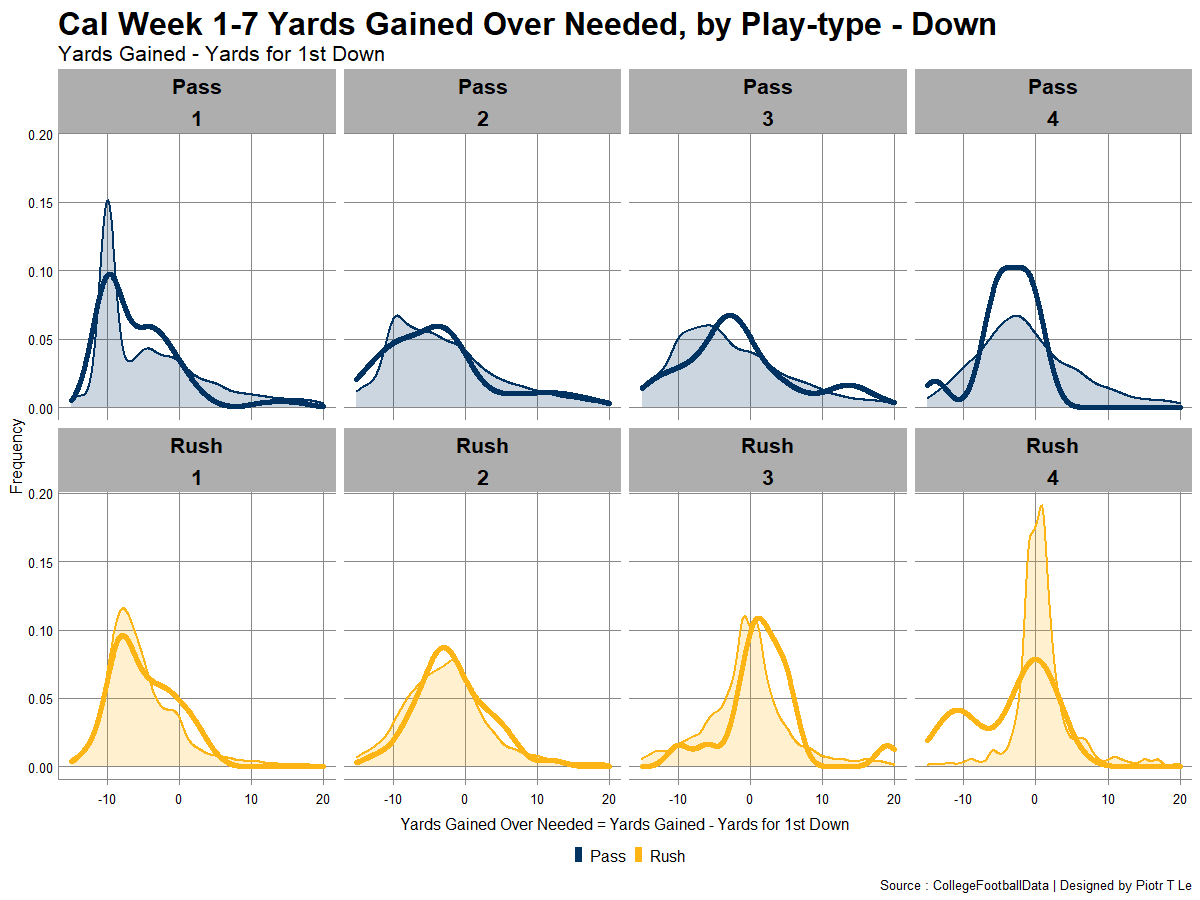
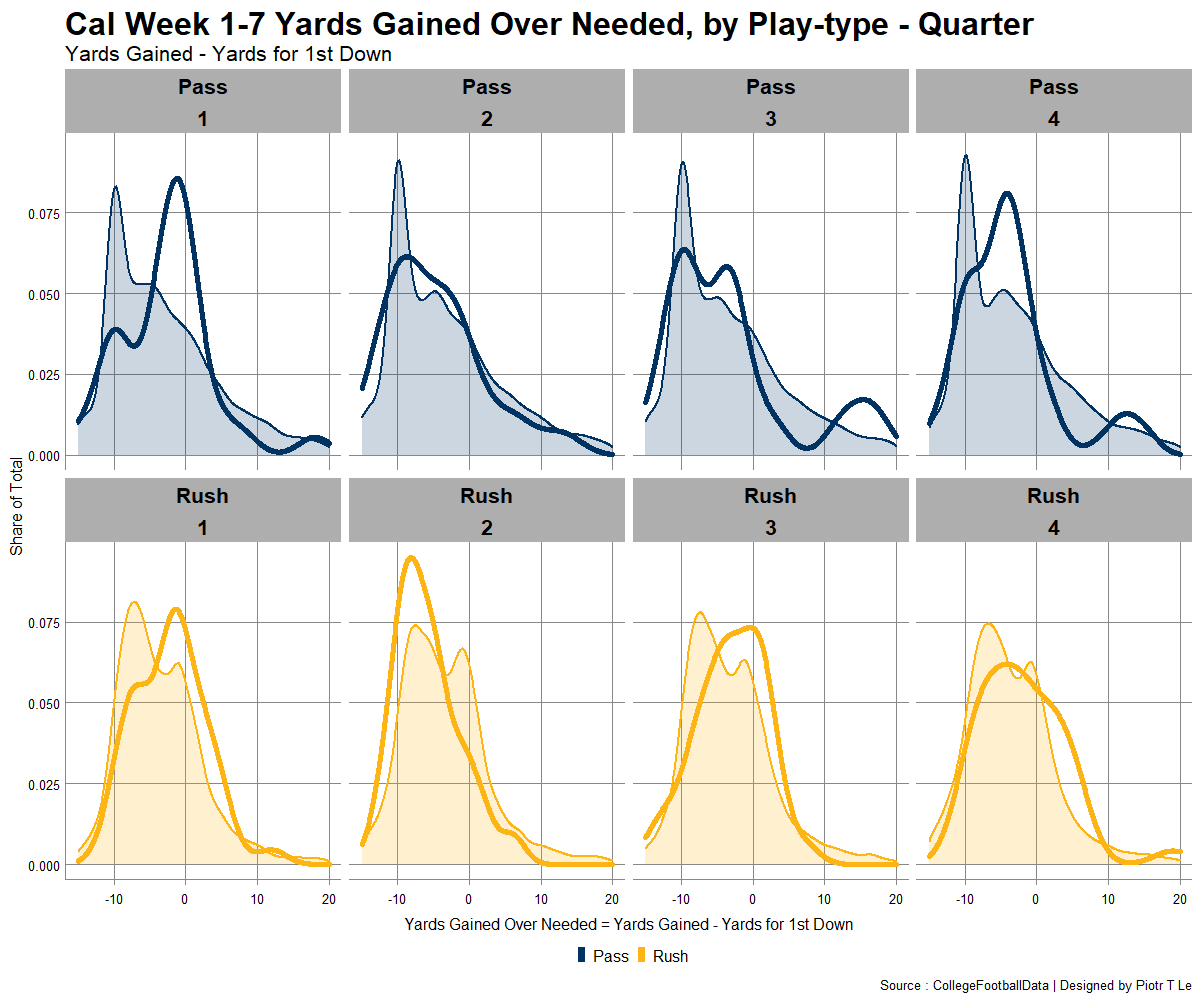
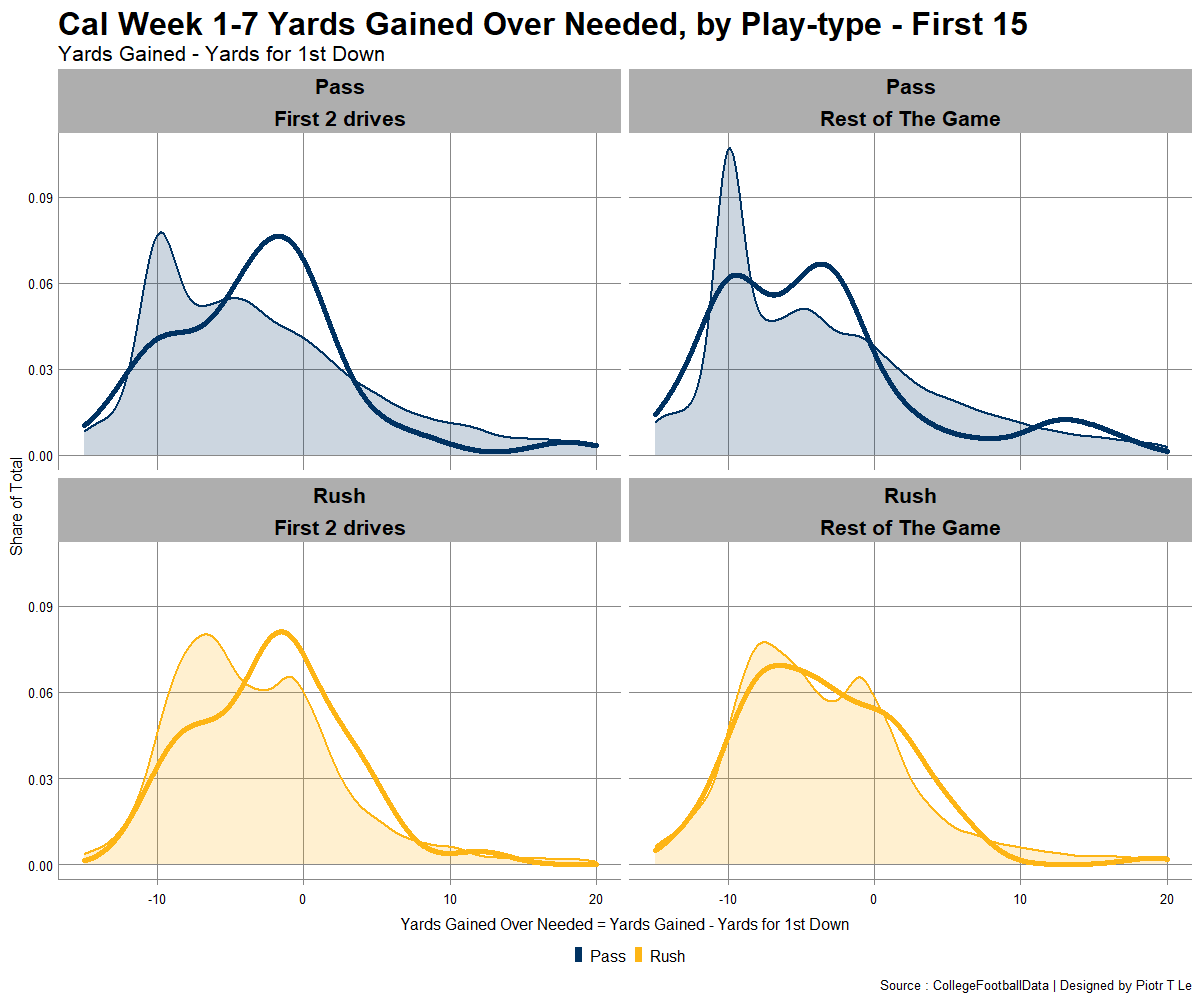
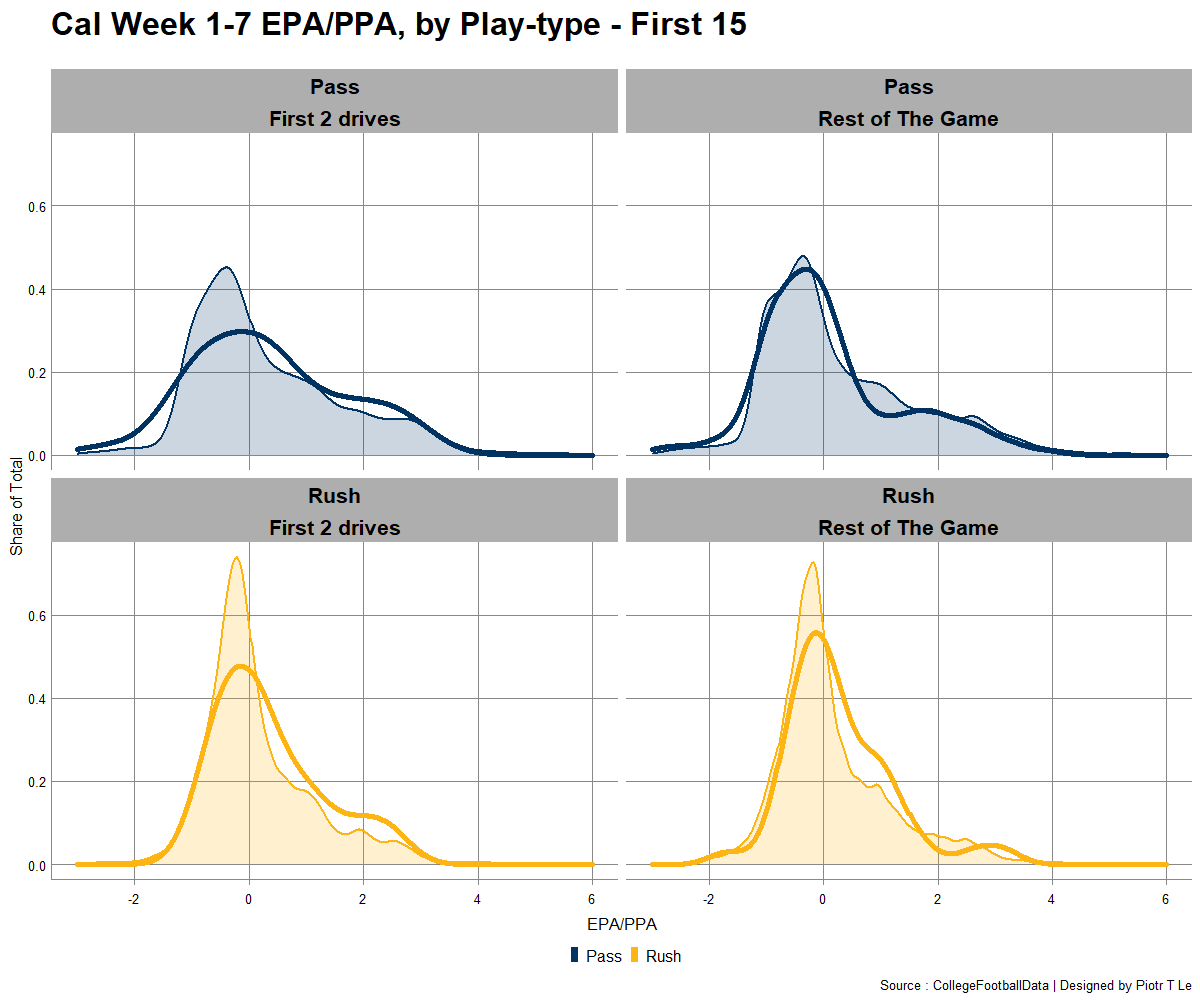
Great quant analysis. I think you have exposed some of the flaws in the thinking of our coaching braintrust. Mainly the maniacal reliance on passing on third and short. If we ran in more of those situations the level of effectiveness would be enhanced, even more so if we considered it a four down situation and ran on 4th and 1. After all, this is a 1-5 team and there is virtually nothing to lose at this point,
Pitor - does your analysis take into account DPI?
It's an oft-repeated joke on twitter that the most effective college football offense is the All PI offense, but I think there's something to it - yeah yeah, not as a strategy, but just it *seemed* like we were sustaining a lot of drives by looking for Hunter and Crawford on deep routes, and a pretty good way to trap the CB into PI would be to have wide outs beat their men deep and then underthrown a back shoulder route so the only way back to the ball would be THROUGH a CB's interference.